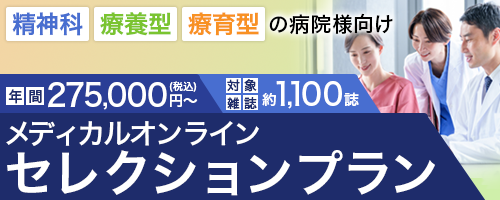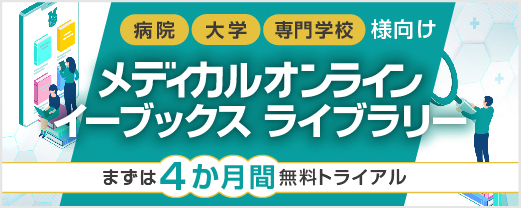アブストラクト
| Title | 物理療法の最前線 |
|---|---|
| Subtitle | I. 第28回日本物理療法学会学術大会 エキスパートレビュー1 |
| Authors | 中村潤二1,2) |
| Authors (kana) | |
| Organization | 1)西大和リハビリテーション病院リハビリテーション部, 2)畿央大学大学院健康科学研究科 |
| Journal | 物理療法科学 |
| Volume | 30 |
| Number | |
| Page | 38-44 |
| Year/Month | 2023 / |
| Article | 報告 |
| Publisher | 日本物理療法学会 |
| Abstract | 「要旨」近年の医療技術の発達とともに新たな物理療法モダリティの開発やエビデンスの確立が進んでいる. 新たなモダリティとして, 体外衝撃波療法(Extracorporeal shock wave therapy: ESWT)や迷走神経刺激(Vagus nerve stimulation: VNS)の報告が増加している. ESWTは, 発生させた衝撃波や圧力波を経皮的に照射する方法であるが, ESWTは整形外科疾患の鎮痛や身体機能の改善に影響する. また近年では, 脳卒中などの中枢神経疾患の痙縮に対して副作用の少ない方法として報告されており, さらなる発展が期待される領域の一つである. VNSは, 侵襲的または経皮的に迷走神経に電気刺激を行い自律神経系に影響を与えることで, 関節リウマチや脳卒中後の上肢運動障害, パーキンソン病の運動障害やすくみ足など, 広範な領域においてその効果が調査されている. 本総説論文では, 物理療法全般の最前線というテーマで, ESWTやVNSといった最新の物理療法モダリティを中心にレビューし, 物理療法の可能性について示したい. |
| Practice | 医療技術 |
| Keywords | 物理療法, 体外衝撃波, 振動刺激, 迷走神経刺激 |
- 全文ダウンロード: 従量制、基本料金制の方共に770円(税込) です。
参考文献
- 1) Dymarek R, Ptaszkowski K, Ptaszkowska L, et al. Shock waves as a treatment modality for spasticity reduction and recovery improvement in post-stroke adults-Current evidence and qualitative systematic review. CIA. 2020; Volume 15: 9-28. doi: 10. 2147/CIA. S221032
- 2) Cabanas-Valdes R, Serra-Llobet P, Rodriguez-Rubio PR, et al. The effectiveness of extracorporeal shock wave therapy for improving upper limb spasticity and functionality in stroke patients: a systematic review and meta-analysis. Clin Rehabil. 2020; 34(9): 1141-1156. doi: 10. 1177/0269215520932196
- 3) Cabanas-Valdes R, Calvo-Sanz J, Urrutia G, et al. The effectiveness of extracorporeal shock wave therapy to reduce lower limb spasticity in stroke patients: a systematic review and meta-analysis. Topics in Stroke Rehabilitation. 2020; 27(2): 137-157. doi: 10. 1080/10749357. 2019. 1654242
- 4) Yang E, Lew HL, Ozcakar L, et al. Recent advances in the treatment of spasticity: Extracorporeal shock wave therapy. JCM. 2021; 10(20): 4723. doi: 10. 3390/jcm10204723
- 5) Leng Y, Lo WLA, Hu C, et al. The effects of extracorporeal shock wave therapy on spastic muscle of the wrist joint in stroke survivors: evidence from neuromechanical analysis. Front Neurosci. 2021; 14: 580762. doi: 10. 3389/fnins. 2020. 580762
残りの31件を表示する
- 6) Manganotti P, Amelio E. Long-term effect of shock wave therapy on upper limb hypertonia in patients affected by stroke. Stroke. 2005; 36(9): 1967-1971. doi: 10. 1161/01. STR. 0000177880. 06663. 5c
- 7) Sohn MK, Cho KH, Kim YJ, et al. Spasticity and electrophysiologic changes after extracorporeal shock wave therapy on gastrocnemius. Ann Rehabil Med. 2011; 35(5): 599. doi: 10. 5535/arm. 2011. 35. 5. 599
- 8) Kenmoku T, Nemoto N, Iwakura N, et al. Extracorporeal shock wave treatment can selectively destroy end plates in neuromuscular junctions: ESWT can destroy end plates in NMJs. Muscle Nerve. 2018; 57(3): 466-472. doi: 10. 1002/mus. 25754
- 9) Kenmoku T, Ochiai N, Ohtori S, et al. Degeneration and recovery of the neuromuscular junction after application of extracorporeal shock wave therapy. J Orthop Res. 2012; 30(10): 1660-1665. doi: 10. 1002/jor. 22111
- 10) Fernandez-Cuadros ME, Martin-Martin LM, Albaladejo-Florin MJ, et al. Radial shock waves modify post-synaptic neuromuscular transmission in the medial spastic gastrocnemius muscle: Case report, neurophysiological evaluation, and review. SN Compr Clin Med. 2020; 2(10): 1914-1921. doi: 10. 1007/s42399-020-00489-5
- 11) Wu YT, Yu HK, Chen LR, et al. Extracorporeal shock waves versus botulinum toxin type a in the treatment of poststroke upper limb spasticity: A randomized noninferiority trial. Archives of Physical Medicine and Rehabilitation. 2018; 99(11): 2143-2150. doi: 10. 1016/j. apmr. 2018. 05. 035
- 12) Wang F, Li W, Zhou Y, et al. Radial extracorporeal shock wave reduces myogenic contracture and muscle atrophy via inhibiting NF-κB/HIF-1α signaling pathway in rabbit. Connective Tissue Research. 2022; 63(3): 298-307. doi: 10. 1080/03008207. 2021. 1920934
- 13) Huang PP, Zhang QB, Zhou Y, et al. Effect of radial extracorporeal shock wave combined with ultrashort wave diathermy on fibrosis and contracture of muscle. Am J Phys Med Rehabil. 2021; 100(7): 643-650. doi: 10. 1097/PHM. 0000000000001599
- 14) Cheng K, Wang Z, Bai J, et al. Research advances in the application of vagus nerve electrical stimulation in ischemic stroke. Front Neurosci. 2022; 16: 1043446. doi: 10. 3389/fnins. 2022. 1043446
- 15) 笹川智貴, 岩崎 寛. 神経筋接合部におけるアセチルコリン受容体. 日本臨床麻酔学会誌. 2016; 36(1): 51-56. doi: https://doi.org/10.2199/jjsca.36.51
- 16) Bonaz B, Sinniger V, Pellissier S. Anti-inflammatory properties of the vagus nerve: potential therapeutic implications of vagus nerve stimulation. J Physiol. 2016; 594(20): 5781-5790. doi: 10. 1113/JP271539
- 17) Koopman FA, Chavan SS, Miljko S, et al. Vagus nerve stimulation inhibits cytokine production and attenuates disease severity in rheumatoid arthritis. Proc Natl Acad Sci USA. 2016; 113(29): 8284-8289. doi: 10. 1073/pnas. 1605635113
- 18) Kimberley TJ, Pierce D, Prudente CN, et al. Vagus nerve stimulation paired with upper limb rehabilitation after chronic stroke: A blinded randomized pilot study. Stroke. 2018; 49(11): 2789-2792. doi: 10. 1161/STROKEAHA. 118. 022279
- 19) Dawson J, Liu CY, Francisco GE, et al. Vagus nerve stimulation paired with rehabilitation for upper limb motor function after ischaemic stroke(VNS-REHAB): a randomised, blinded, pivotal, device trial. The Lancet. 2021; 397(10284): 1545-1553. doi: 10. 1016/S0140-6736(21)00475-X
- 20) Ananda R, Roslan MHB, Wong LL, et al. Efficacy and safety of vagus nerve stimulation in stroke rehabilitation: A systematic review and meta-analysis. Cerebrovasc Dis. Published online September 27, 2022: 1-12. doi: 10. 1159/000526470
- 21) Meyers EC, Solorzano BR, James J, et al. Vagus nerve stimulation enhances stable plasticity and generalization of stroke recovery. Stroke. 2018; 49(3): 710-717. doi: 10. 1161/STROKEAHA. 117. 019202
- 22) Wu D, Ma J, Zhang L, et al. Effect and safety of transcutaneous auricular vagus nerve stimulation on recovery of upper limb motor function in subacute ischemic stroke patients: A randomized pilot study. Neural Plast. 2020; 2020: 8841752. doi: 10. 1155/2020/8841752
- 23) Zhao K, Yang J, Huang J, et al. Effect of vagus nerve stimulation paired with rehabilitation for upper limb function improvement after stroke: a systematic review and meta-analysis of randomized controlled trials. International Journal of Rehabilitation Research. 2022; 45(2): 99-108. doi: 10. 1097/MRR. 0000000000000509
- 24) Zhao YX, He W, Jing XH, et al. Transcutaneous auricular vagus nerve stimulation protects endotoxemic rat from lipopolysaccharide-induced inflammation. Evid Based Complement Alternat Med. 2012; 2012: 627023. doi: 10. 1155/2012/627023
- 25) Farrand AQ, Helke KL, Gregory RA, et al. Vagus nerve stimulation improves locomotion and neuronal populations in a model of Parkinson's disease. Brain Stimulation. 2017; 10(6): 1045-1054. doi: 10. 1016/j. brs. 2017. 08. 008
- 26) Mondal B, Choudhury S, Simon B, et al. Noninvasive vagus nerve stimulation improves gait and reduces freezing of gait in Parkinson's disease. Mov Disord. 2019; 34(6): 917-918. doi: 10. 1002/mds. 27662
- 27) Marano M, Anzini G, Musumeci G, et al. Transcutaneous auricular vagus stimulation improves gait and reaction time in parkinson's disease. Movement Disorders. 2022; 37(10): 2163-2164. doi: 10. 1002/mds. 29166
- 28) Dawson J, Pierce D, Dixit A, et al. Safety, feasibility, and efficacy of vagus nerve stimulation paired with upper-limb rehabilitation after ischemic stroke. Stroke. 2016; 47(1): 143-150. doi: 10. 1161/STROKEAHA. 115. 010477
- 29) Stavrakis S, Stoner JA, Humphrey MB, et al. TREAT AF(Transcutaneous Electrical Vagus Nerve Stimulation to Suppress Atrial Fibrillation): A randomized clinical trial. JACC Clin Electrophysiol. 2020; 6(3): 282-291. doi: 10. 1016/j. jacep. 2019. 11. 008
- 30) Moggio L, de Sire A, Marotta N, et al. Vibration therapy role in neurological diseases rehabilitation: an umbrella review of systematic reviews. Disability and Rehabilitation. 2022; 44(20): 5741-5749. doi: 10. 1080/09638288. 2021. 1946175
- 31) Avvantaggiato C, Casale R, Cinone N, et al. Localized muscle vibration in the treatment of motor impairment and spasticity in post-stroke patients: a systematic review. Eur J Phys Rehabil Med. 2021; 57(1). doi: 10. 23736/S1973-9087. 20. 06390-X
- 32) Seim CE, Wolf SL, Starner TE. Wearable vibrotactile stimulation for upper extremity rehabilitation in chronic stroke: clinical feasibility trial using the VTS Glove. J NeuroEngineering Rehabil. 2021; 18(1): 14. doi: 10. 1186/s12984-021-00813-7
- 33) Qiu CG, Chui CS, Chow SKH, et al. Effects of whole-body vibration therapy on knee osteoarthritis: A systematic review and meta-analysis of randomized controlled trials. JRM. 2022; 54: jrm00266. doi: 10. 2340/jrm. v54. 2032
- 34) Culvenor AG, Girdwood MA, Juhl CB, et al. Rehabilitation after anterior cruciate ligament and meniscal injuries: a best-evidence synthesis of systematic reviews for the OPTIKNEE consensus. Br J Sports Med. 2022; 56(24): 1445-1453. doi: 10. 1136/bjsports-2022-105495
- 35) Blackburn JT, Pamukoff DN, Sakr M, et al. Whole body and local muscle vibration reduce artificially induced quadriceps arthrogenic inhibition. Archives of Physical Medicine and Rehabilitation. 2014; 95(11): 2021-2028. doi: 10. 1016/j. apmr. 2014. 07. 393
- 36) Souron R, Besson T, Millet GY, et al. Acute and chronic neuromuscular adaptations to local vibration training. Eur J Appl Physiol. 2017; 117(10): 1939-1964. doi: 10. 1007/s00421-017-3688-8



